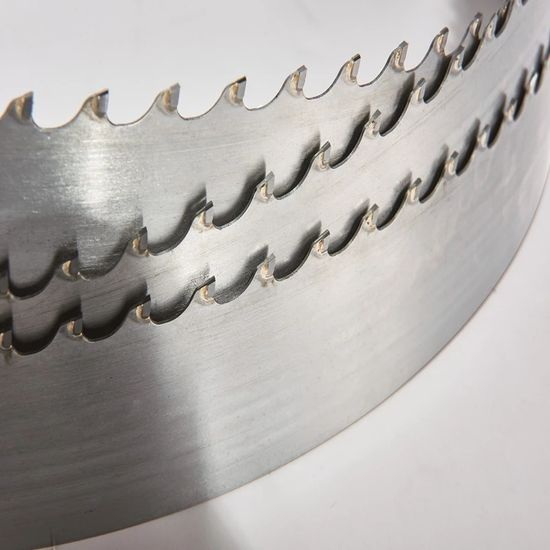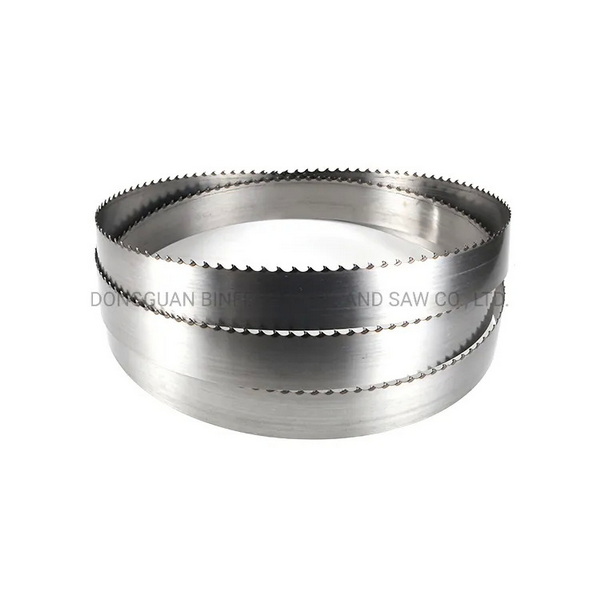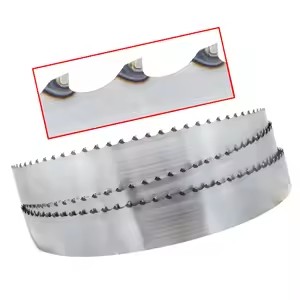Content Menu
● What is Tungsten Carbide?
>> Composition and Properties
>> Manufacturing Process
>> Types of Tungsten Carbide
>> Applications of Tungsten Carbide
● How Metal Detectors Work
>> Factors Affecting Metal Detection
● Can Metal Detectors Detect Tungsten Carbide?
>> Electrical Conductivity
>> Composition and Binders
>> Metal Detector Sensitivity
>> Environmental Conditions
>> Practical Considerations
● Sample Preparation and Detection Methods
>> Digestion Methods
>> Detection Methods
>> Example: ICP-AES Analysis
● Advanced Techniques for Purity Quantification
>> DC Arc Spectrometry
● Inspection and Identification
>> Appearance
>> Density Test
>> Hardness Test
● Tungsten Carbide in the Environment
>> Environmental Impact
>> Safety Considerations
>> Regulatory Information
● Conclusion
● FAQ
>> 1. Will a standard metal detector find a tungsten carbide ring?
>> 2. Can soil mineralization affect the detection of tungsten carbide?
>> 3. What is the best way to prepare a tungsten carbide sample for chemical analysis?
>> 4. What analytical techniques are used to detect trace elements in tungsten carbide?
>> 5. Is tungsten carbide harmful to the environment?
● Citations:
Tungsten carbide is a versatile material recognized for its hardness, wear resistance, and numerous industrial applications[3]. Its unique properties make it suitable for everything from cutting tools to jewelry[2]. A frequent question arises: Can metal detectors detect tungsten carbide? This article explores the properties of tungsten carbide, its uses, and its detectability by metal detectors.

What is Tungsten Carbide?
Tungsten carbide (WC) is a chemical compound comprising equal parts of tungsten and carbon atoms[2]. In its basic form, it is a fine gray powder that can be pressed and sintered into various shapes for industrial uses[2]. Tungsten carbide is approximately three times stiffer than steel and twice as dense[2].
Composition and Properties
Tungsten carbide is a cermet, a composite of ceramic and metallic materials[3]. It typically consists of 94% tungsten and 6% carbon by weight, often with binding materials like cobalt or nickel to enhance specific properties[3]. The resulting material combines the high hardness of ceramic tungsten carbide with the toughness of metallic binders[3].
Key Properties of Tungsten Carbide:
- Hardness: Ranks between 9.0 and 9.5 on the Mohs scale[2].
- Melting Point: High melting point of 2,870 °C (3,140 K)[2].
- Density: Approximately twice as dense as steel[2].
- Stiffness: Three times as stiff as steel, with a Young's modulus of approximately 530–700 GPa[2].
- Thermal Conductivity: 110 W/m·K[2].
- Electrical Conductivity: Similar to tool steel and carbon steel[8][10].
- Compressive Strength: Higher than virtually all melted, cast, or forged metals[7][10].
- Heat Resistance: Performs well up to about 1000°F in oxidizing atmospheres and to 1500°F in non-oxidizing atmospheres[10].
Manufacturing Process
The production of tungsten carbide involves several steps[6]:
1. Raw Material Separation: Tungsten is separated from ores like scheelite or wolframite to obtain Ammonium ParaTungstate (APT)[6].
2. Powder Creation: The tungsten is mixed with carbon to create tungsten carbide powder[6].
3. Mixing with Binder: The tungsten carbide powder is precisely mixed with a binder metal, usually cobalt or nickel[6].
4. Compaction and Sintering: The mixture is compacted and sintered in a furnace[6].
The properties of tungsten carbide can be adjusted by varying the composition of the powder and the binder, allowing for exceptional levels of material strength, wear resistance, and corrosion resistance[6].
Types of Tungsten Carbide
There are two well-characterized compounds of tungsten and carbon:
- Tungsten Carbide (WC): Contains equal parts of tungsten and carbon[2].
- Tungsten Semicarbide (W2C): Another compound that may be present in coatings, with proportions depending on the coating method[2].
Applications of Tungsten Carbide
Tungsten carbide is used in a wide array of applications due to its superior properties[3]:
- Cutting Tools: Utilized in machining due to its ability to operate at higher speeds than high-speed steel[2].
- Abrasives: Employed in grinding and polishing applications[2].
- Wear-Resistant Coatings: Protects critical components in demanding environments[3].
- Jewelry: Used in rings and other jewelry items due to its hardness and durability[2].
- Industrial Machinery: Enhances the durability and performance of various machine components[2].
- Armor-Piercing Ammunition: Utilized in bullets for its high density and hardness[2].
- Oil Drilling Equipment: Protects equipment from wear and tear in harsh conditions[3].
- Aerospace Turbines: Ensures the reliability and longevity of turbine blades[3].

How Metal Detectors Work
Metal detectors operate on the principle of electromagnetic induction[4]. They consist of an oscillator that produces an alternating current, which passes through a coil to generate an alternating magnetic field[4]. When a metallic object enters this field, it induces eddy currents within the metal[4]. These eddy currents create their own magnetic field, which opposes the primary field[4].
The detector senses this change in the magnetic field and signals the presence of metal[4]. Different types of metal detectors are designed for various purposes, including detecting metal in the ground, security screening, and industrial applications[4].
Factors Affecting Metal Detection
Several factors can affect the ability of a metal detector to detect a particular metal object[4]:
- Size and Shape of the Object: Larger objects are generally easier to detect than smaller ones[4].
- Depth of the Object: The deeper an object is buried, the more difficult it is to detect[4].
- Metal Type: Different metals have different electrical conductivities and magnetic properties, affecting their detectability[4].
- Soil Conditions: Mineralization and moisture content in the soil can interfere with the detection signal[4].
- Detector Settings: Sensitivity and discrimination settings on the metal detector can be adjusted to optimize performance[4].
Can Metal Detectors Detect Tungsten Carbide?
The ability of a metal detector to detect tungsten carbide depends on several factors, including the composition of the tungsten carbide, the sensitivity of the detector, and environmental conditions[5].
Electrical Conductivity
Tungsten carbide has an electrical conductivity similar to tool steel and carbon steel[8][10]. This level of conductivity means that it can be detected by metal detectors, but not as easily as metals with higher conductivity like copper or silver[4].
Composition and Binders
Tungsten carbide is often combined with other metals, such as cobalt or nickel, to act as binders[3]. The presence of these metallic binders can enhance the detectability of the composite material[6]. Metal detectors may primarily detect the binder material rather than the tungsten carbide itself[6].
Metal Detector Sensitivity
The sensitivity of the metal detector plays a crucial role[4]. High-sensitivity detectors are more likely to detect tungsten carbide, especially if it is present in small quantities or at a greater depth[4]. Adjusting the detector settings to maximize sensitivity can improve the chances of detection[4].
Environmental Conditions
Soil mineralization, moisture content, and other environmental factors can affect the performance of metal detectors[4]. In highly mineralized soils, the detector may produce false signals, making it more difficult to identify tungsten carbide[4]. Proper ground balancing and discrimination settings can help mitigate these effects[4].
Practical Considerations
- Jewelry: Tungsten carbide rings and other jewelry items can be detected by metal detectors, though the signal may not be as strong as with other metallic jewelry[5].
- Industrial Applications: In industrial settings, metal detectors can be used to identify tungsten carbide components in machinery or to detect contamination[3].
- Security Screening: Security metal detectors are generally sensitive enough to detect tungsten carbide, especially if it is combined with metallic binders[4].
Sample Preparation and Detection Methods
In analytical chemistry, various methods are used to prepare and detect tungsten carbide in different matrices[1].
Digestion Methods
One common method involves digesting tungsten carbide samples using microwave digestion with nitric acid and phosphoric acid under high-pressure sealed conditions[1]. This process ensures that the tungsten remains in a stable, ionic form in the solution, preventing precipitation[1].
Microwave Digestion Procedure:
1. Sample Preparation: Weigh 0.5000g of tungsten carbide sample[1].
2. Acid Addition: Add 10.0mL of red fuming nitric acid (RFNA) and 5.0mL of strong phosphoric acid[1].
3. Microwave Procedure: Warm up to 190°C in 6 minutes and incubate for 20 minutes[1].
Detection Methods
After digestion, various analytical techniques can be used to detect and quantify the elements present in the sample[1].
- ICP-AES (Inductively Coupled Plasma Atomic Emission Spectrometry): This method is used to analyze the solution for elements such as Ta, Fe, V, Ti, Mn, Mg, Si, Co, Ni, As, Mo, Nb, Cr, Zn, and Cu[1].
- GF-AAS (Graphite Furnace Atomic Absorption Spectrometry): Another technique used for elemental analysis[1].
- ICP-MS (Inductively Coupled Plasma Mass Spectrometry): A highly sensitive method for detecting trace elements[1].
Example: ICP-AES Analysis
In one embodiment, the supernatant liquor of the prepared tungsten sample solution is used for direct analysis with ICP-AES[1]. The ICP-AES determination is carried out in the usual way, with matrix matching using high-purity tungsten[1]. Mixed standard solutions of each element are prepared according to the sensing range[1].
Detectable Concentration Range:
- 1%~0.001% for Ta, Fe, V, Ti, Mn, Mg, Si, As, Mo, Nb, Cr, Zn, Cu[1]
- 6%~0.001% for Co, Ni[1]
Advanced Techniques for Purity Quantification
Quantifying the purity of tungsten carbide is crucial for many applications[6]. Advanced techniques such as DC Arc Spectrometry are used to determine trace elements in high-purity tungsten carbide[6].
DC Arc Spectrometry
This method involves using a blend of graphite, barium fluoride, and germanium(IV) oxide as a carrier to improve detection limits[6]. Tungsten metal is used for calibration instead of tungsten carbide[6].
Key Steps:
1. Sample Preparation: Blend graphite, barium fluoride, and germanium(IV) oxide in a 50:4:1 ratio[6].
2. Analysis: Use the Teledyne Leeman Lab's Prodigy DC Arc to determine trace elements[6].
3. Calibration: Use tungsten metal for calibration[6].
This technique allows for reproducible detection limits for trace elements in tungsten carbide, ensuring the integrity of the material[6].
Inspection and Identification
While metal detectors can provide an indication of the presence of tungsten carbide, inspection and other identification methods are also important.
Appearance
Tungsten carbide is a dense, metal-like substance with a light gray color and a bluish tinge[7]. Its distinctive appearance can help in identifying it[7].
Density Test
Tungsten carbide has a high density (almost 19 times the density of water)[4]. This property can be used to differentiate it from other materials[4].
Hardness Test
Tungsten carbide is extremely hard, ranking high on the Mohs scale[2]. A hardness test can help confirm its identity[2].
Tungsten Carbide in the Environment
Understanding the environmental behavior and safety aspects of tungsten carbide is essential.
Environmental Impact
Tungsten carbide is generally considered to have low environmental impact due to its stability and inertness[9]. However, the production and processing of tungsten carbide can have environmental consequences, such as energy consumption and waste generation[9].
Safety Considerations
When handling tungsten carbide, it is essential to follow proper safety protocols to minimize exposure to dust and particles[9]. Inhalation of tungsten carbide dust can lead to respiratory issues[9].
Regulatory Information
Tungsten carbide is regulated under various environmental and safety regulations[9]. It is essential to comply with these regulations to ensure responsible use and disposal[9].
Conclusion
In summary, metal detectors can detect tungsten carbide, but the ease of detection depends on the detector's sensitivity, the composition of the tungsten carbide, and environmental conditions. The presence of metallic binders like cobalt or nickel can enhance detectability. While not as conductive as other metals, tungsten carbide's unique properties make it suitable for a wide range of applications, from cutting tools to jewelry.
The use of advanced analytical techniques such as microwave digestion and ICP-AES is crucial for quantifying the purity and composition of tungsten carbide. Proper handling and disposal practices are essential to minimize any potential environmental and health impacts.

FAQ
1. Will a standard metal detector find a tungsten carbide ring?
Yes, a standard metal detector can detect a tungsten carbide ring[5]. However, the signal may not be as strong as with rings made of more conductive metals like gold or silver. The presence of binder metals like cobalt can improve detectability[3][6].
2. Can soil mineralization affect the detection of tungsten carbide?
Yes, soil mineralization can interfere with the detection of tungsten carbide[4]. Highly mineralized soils can produce false signals, making it more difficult to identify tungsten carbide. Proper ground balancing and discrimination settings on the metal detector can help mitigate these effects[4].
3. What is the best way to prepare a tungsten carbide sample for chemical analysis?
The best way to prepare a tungsten carbide sample for chemical analysis is through microwave digestion using nitric acid and phosphoric acid under high-pressure sealed conditions[1]. This method ensures that the tungsten remains in a stable, ionic form in the solution, preventing precipitation[1].
4. What analytical techniques are used to detect trace elements in tungsten carbide?
Several analytical techniques can be used to detect trace elements in tungsten carbide[1][6]. These include ICP-AES (Inductively Coupled Plasma Atomic Emission Spectrometry), GF-AAS (Graphite Furnace Atomic Absorption Spectrometry), ICP-MS (Inductively Coupled Plasma Mass Spectrometry), and DC Arc Spectrometry[1][6].
5. Is tungsten carbide harmful to the environment?
Tungsten carbide is generally considered to have low environmental impact due to its stability and inertness[9]. However, the production and processing of tungsten carbide can have environmental consequences. Proper handling and disposal practices are essential to minimize any potential impacts[9].
Citations:
[1] https://patents.google.com/patent/CN102213657B/en
[2] https://en.wikipedia.org/wiki/Tungsten_carbide
[3] https://www.linde-amt.com/resource-library/articles/tungsten-carbide
[4] https://detectingschool.com/can-metal-detectors-detect-tungsten/
[5] https://www.reddit.com/r/metaldetecting/comments/3k44ae/can_i_use_a_metal_detector_on_my_tungsten_carbide/
[6] https://info.teledynelabs.com/blog/Tungsten-Carbide-Quantification-of-Purity-DC-ARC
[7] https://www.carbideprobes.com/wp-content/uploads/2019/07/TungstenCarbideDataSheet.pdf
[8] https://metaldetectingforum.com/index.php
[9] https://hpvchemicals.oecd.org/ui/handler.axd?id=ed1c76bf-dad9-4baa-8d1b-70fed7f92862
[10] https://carbideprocessors.com/pages/carbide-parts/tungsten-carbide-properties.html
















